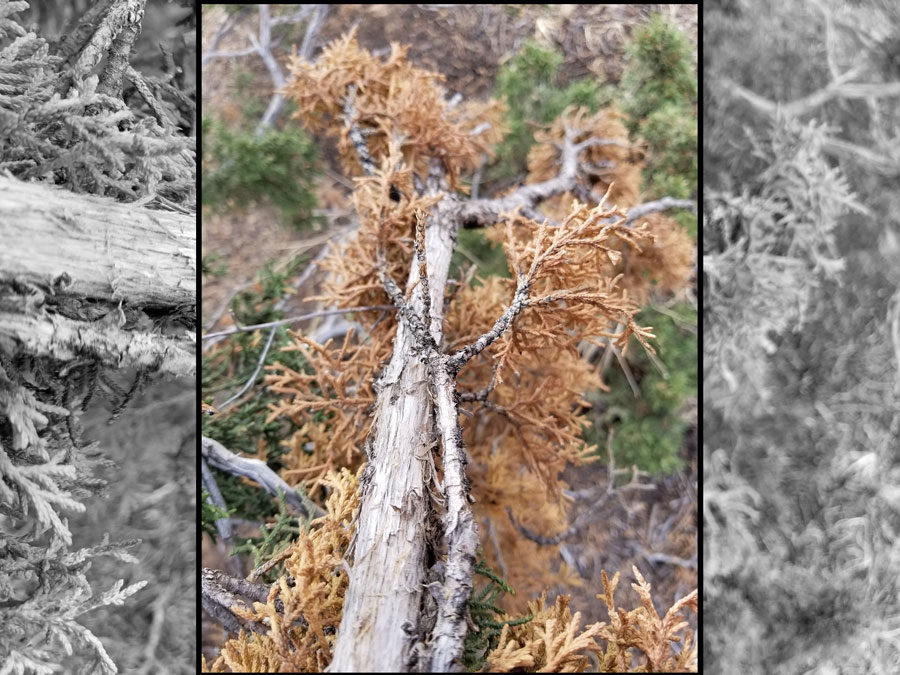No More Trees? Thanks, Climate Change
April 18, 2018
Scientists predict a mass die-out of almost all of the pine-juniper forests in the American Southwest. This means that in roughly 40 years, everywhere in Santa Fe where we are used to seeing piñon and juniper trees — along the highway, dotting the foothills, in most of our backyards — we will instead see dry, largely barren grasslands.
A group of federal agencies and universities, including Los Alamos National Labs, Columbia University, and the University of New Mexico, have published a paper called “Nature Climate Change,” which predicts the disappearance of the majority of the Southwest’s pine-juniper forests.
This alarming discovery prompted a study that simulated drought conditions to observe the way evergreen forests might respond to warming over a period of time. The study revealed that previous tree mortality predictions were too low, and projected instead that pine-juniper forests would be completely gone, along with almost half of evergreen forests in the northern hemisphere.
These mass die-offs will have devastating effects on many ecosystems, not only in the northern hemisphere, but also the rest of the world.
According to research published by LANL, drought, out of all the factors affecting tree survival, has by far the most detrimental impact on older, bigger trees. But both large and small tree death hurts ecosystems and the health of the climate because they are part of the carbon cycle.
“Living trees soak up greenhouse gas and store it for a long time in their woody tissues,” the research explains. After these trees die, all the carbon dioxide they had stored up gets released back into the atmosphere.
The mass amount of carbon dioxide getting released into the atmosphere only worsens the effects of climate change, further killing off large trees that are more susceptible to the harmful effects of solar radiation due to their height.
In diverse ecosystems such as New Mexico’s, the die-off with have additional consequences.
Environmental competition between grassland and woodland ecosystems is constant, according to Amy Lewis, a Santa Fe hydrologist. Lewis explains that most of New Mexico’s trees are “foreign invaders,” meaning that they are not native trees. Most of the American Southwest, including New Mexico, used to have a predominantly grassland ecosystem wherein the grass would usually kill tree seedlings before they could grow, and even carry natural wildfires that would burn parts of forests.
This was all part of a natural cycle that allowed the environment to maintain itself, yet human interference — deforestation, heavily altering the landscape, and overgrazing — has completely thrown off the natural cycle, allowing foreign tree species to sprout up and grow everywhere, turning New Mexico’s landscape into what it is today.
Popular tourist attractions such as Aspen Vista in the Santa Fe ski basin may see a complete disappearance of the aspen trees due to beetle infestations, but this may be part of an inevitable process — the conversion to a grassland biome, which isn’t necessarily a bad thing.
However, these mass tree deaths have a massively negative effect on the Earth.
Based on extensive research and theoretical predictions by Nate McDowell, LANL states, “Consequences on ecosystem function, biodiversity, and the carbon cycle that begets climate change could be great,” projecting a moderately bleak future for the future of ecosystems not just in the American Southwest, but the entire world.


